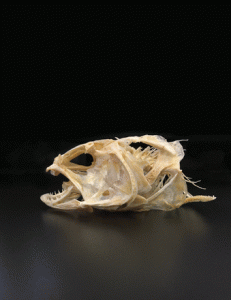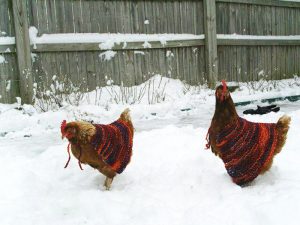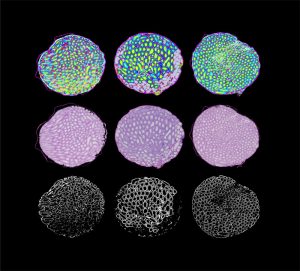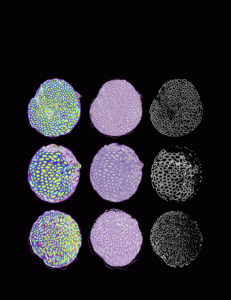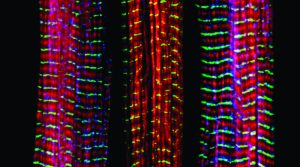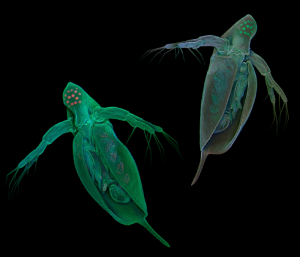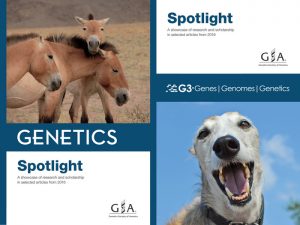Enter your address to receive notifications about new posts to your email.
Articles tagged G3 Journal
(248 results)
-
New in G3: halophilic yeast, cotton gene flow, and karyotypic evolution in icefish
Check out the July issue of G3! Table of Contents Genome Report Insight into the Recent Genome Duplication of the Halophilic Yeast Hortaea werneckii: Combining an Improved Genome with Gene Expression and Chromatin Structure Sunita Sinha, Stephane Flibotte, Mauricio Neira, Sean Formby, Ana Plemenitaš, Nina Gunde Cimerman, Metka Lenassi, Cene Gostincar, Jason E. Stajich, Corey Nislow G3: Genes,…
-
Hot wings and snow birds: Extreme temperature adaptation in domestic chickens
Humans built the modern world with the help of domestic plants and animals. A byproduct of our many domestication experiments is a series of excellent long-term controlled evolutionary comparisons that are helping geneticists understand adaptation. In a study published in the May issue of G3, Fleming et al. identify genomic regions under natural selection in…
-
Behind the cover: Male infertility in the mouse Collaborative Cross
Fascinating discoveries sometimes emerge from the most daunting of experimental roadblocks. Designed to generate over 1,000 recombinant inbred mice lines for genetic mapping, the Collaborative Cross (CC) project unearthed astounding variation in male fertility when nearly 95% of the highly inbred CC lines went extinct. As part of the Multiparental Populations series in the June…
-
New in G3: multiparental populations, worm fat levels, and mutant screen reports
Check out the June issue of G3! Table of Contents Editorial Back to the Future: Multiparent Populations Provide the Key to Unlocking the Genetic Basis of Complex Traits Dirk-Jan de Koning, Lauren M. McIntyre G3: Genes, Genomes, Genetics June 2017 7: 1617-1618; DOI: https://doi.org/10.1534/g3.117.042846 Commentary Epistasis: Searching for Interacting Genetic Variants Using Crosses Ian M.…
-
Dysfunctional calcium release contributes to muscle weakness as we age
Strong muscles aren’t important only for athletes—declining skeletal muscle strength is strongly associated with lower quality of life and even mortality in older adults. As the world’s population ages, understanding why muscle strength decreases over our lifespans is critical to ensuring seniors enjoy a happy, healthy old age. Normally, a muscle contracts when calcium is…
-
MPP People: Elizabeth King
Multiparental populations (MPPs) have brought a new era in mapping complex traits, as well as new analytical challenges. To face these challenges and encourage innovation, the GSA journals launched the ongoing Multiparental Populations series in 2014. This month’s issues of GENETICS and G3 feature a bumper 16 MPP articles, timed to celebrate a new easy-to-use…
-
Explore the new Multiparental Populations resource at GENETICS and G3
The GSA Journals are proud to announce a brand new site for our Multiparental Populations (MPP) series. We’re celebrating this redesigned, easy-to-browse site with the addition of sixteen new papers from both journals to the series. As the field of genetics has grown, the rapid development of genomic technologies has given researchers the ability to…
-
On the cover: Daphnia in the spotlight
Illuminating the cover of the May issue of G3 is a lake-dwelling filter feeder no more than a couple millimeters long. This microcrustacean—Daphnia pulex, also known as the water flea—is an important model organism, especially in ecological genetics. But despite Daphnia’s status as a model organism, no one had examined its population genomics until now.…
-
New in G3: Daphnia genome assembly, mouse craniofacial shape, and Drosophila spermathecal cell fates
Check out the May issue of G3! Table of Contents Investigations Accurate Classification of Protein Subcellular Localization from High-Throughput Microscopy Images Using Deep Learning Tanel Pärnamaa, Leopold Parts G3: Genes, Genomes, Genetics May 2017 7: 1385-1392; DOI: https://doi.org/10.1534/g3.116.033654 Genotype Calling from Population-Genomic Sequencing Data Takahiro Maruki, Michael Lynch G3: Genes, Genomes, Genetics May 2017 7:…
-
GSA Journals Spotlight 2016
The GSA Journals, GENETICS and G3: Genes|Genomes|Genetics, are proud to present our annual Spotlight booklets for research published in 2016. Each Spotlight is a showcase of the excellent research and scholarship published over the course of the year, along with a selection of striking images submitted by our authors. Browse the 2016 GENETICS Spotlight. Browse the 2016 G3 Spotlight. GENETICS SPOTLIGHT CITATIONS 2016 EDITORS’…
-
Cause of fatal naked foal syndrome revealed
When a horse is born with naked foal syndrome (NFS), it will likely die early. This genetic skin condition affects the Akhal-Teke horse breed from Turkmenistan, which is known for its speed, endurance, and intelligence. Worryingly, the incidence of NFS seems to be increasing. Although breeders have been aware of NFS for over 75 years,…

